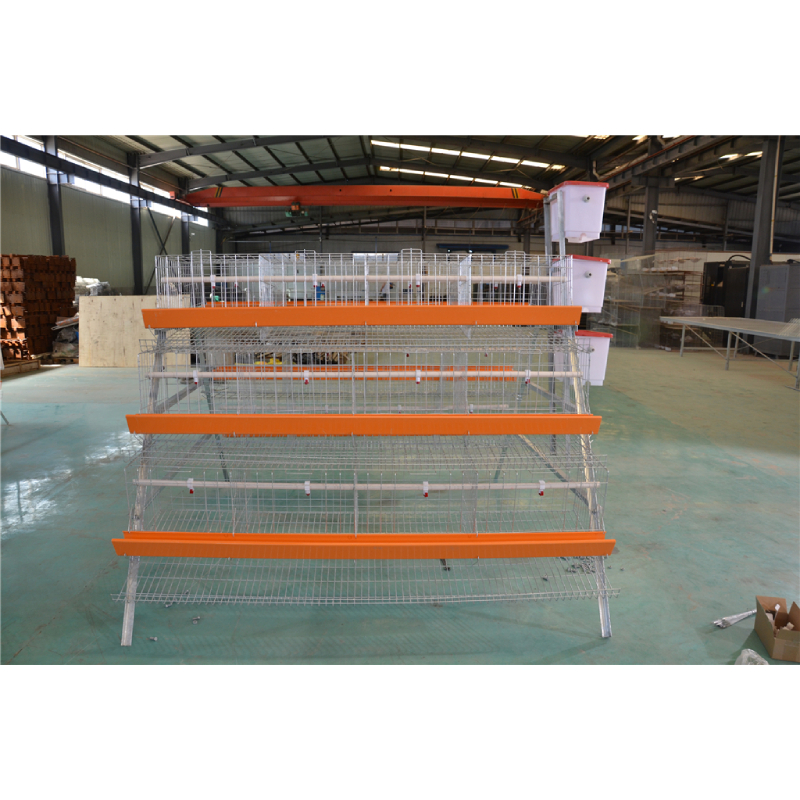Understanding the Benefits of Chick Brooding Cages for Optimal Poultry Care
Oct . 18, 2024 19:05 Back to list
Understanding the Benefits of Chick Brooding Cages for Optimal Poultry Care
The Impact of Chick Brooding Cages on Poultry Farming
Poultry farming is an essential part of the global agricultural landscape, providing a significant source of protein for human consumption. Among the various stages of chicken development, the brooding phase is critical, as it directly influences the health and growth of chicks. In recent years, the use of chick brooding cages has become more prevalent, sparking discussions about their advantages and the implications for animal welfare.
Chick brooding cages are designed to create an optimal environment for chicks during the first few weeks of their lives. This period is crucial, as it is when chicks are most vulnerable to environmental stressors such as temperature fluctuations, humidity, and disease. Proper brooding management ensures that chicks receive adequate warmth, protection, and nutrition, leading to better survival rates and healthier birds.
One of the primary benefits of using chick brooding cages is that they provide a controlled environment that minimizes exposure to pathogens
. In traditional brooding methods, chicks are often placed in larger spaces where they may be exposed to contaminants from excrement or wild birds. Cages help contain the birds and facilitate better biosecurity measures. Additionally, they allow for easier monitoring of individual birds' health, enabling farmers to identify and address issues promptly.chick brooding cage

Another advantage of chick brooding cages is the efficiency they bring to poultry farming operations. These cages are designed to maximize space while ensuring that chicks have enough room to move around. By using vertical space effectively, farmers can accommodate a larger number of chicks in a smaller footprint. This increased density can lead to significant cost savings in terms of housing and resource management.
However, the rise of chick brooding cages has raised concerns regarding animal welfare. Critics argue that keeping chicks in cages can restrict their natural behaviors, such as nesting, foraging, and social interactions. The confined space may lead to stress and a range of welfare issues, including feather pecking and increased morbidity. As consumers become more aware of animal welfare issues, the demand for more humane farming practices has gained momentum, prompting producers to reconsider their brooding strategies.
In response to these challenges, some poultry farms have begun to adopt enriched or group housing systems that allow for greater freedom of movement while maintaining the benefits of controlled environments. These systems aim to strike a balance between efficiency, productivity, and the inherent welfare needs of the birds.
In conclusion, chick brooding cages play a crucial role in modern poultry farming by providing a controlled environment that enhances survival and growth rates. However, as the industry evolves, it is essential for farmers to remain mindful of animal welfare concerns. The future of poultry farming will likely involve innovative solutions that combine the benefits of cage systems with a commitment to improving the welfare of the birds, ensuring that the industry can meet both productivity and ethical standards. As we move forward, the adoption of more sustainable and humane practices will be critical in shaping the future of poultry farming and addressing the challenges posed by modern agricultural demands.
-
Hot Sale 24 & 18 Door Rabbit Cages - Premium Breeding Solutions
NewsJul.25,2025
-
Automatic Feeding Line System Pan Feeder Nipple Drinker - Anping County Yize Metal Products Co., Ltd.
NewsJul.21,2025
-
Automatic Feeding Line System Pan Feeder Nipple Drinker - Anping County Yize Metal Products Co., Ltd.
NewsJul.21,2025
-
Automatic Feeding Line System - Anping Yize | Precision & Nipple
NewsJul.21,2025
-
Automatic Feeding Line System - Anping Yize | Precision & Nipple
NewsJul.21,2025
-
Automatic Feeding Line System-Anping County Yize Metal Products Co., Ltd.|Efficient Feed Distribution&Customized Animal Farming Solutions
NewsJul.21,2025






